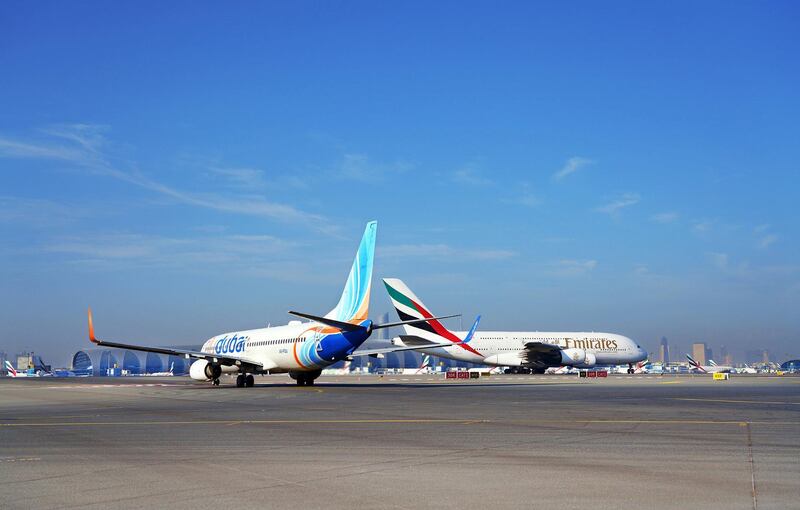Emirates and flydubai have carried a total of more than 5.27 million passengers during their two-year partnership as the Dubai-based carriers team up to face tough market conditions and streamline operations.
About 800,000 Emirates Skywards members have earned over 1.5 billion Skywards Miles on Emirates and flydubai codeshare flights in the last 12 months, Emirates said in a statement on Monday.
"The strategic partnership between Emirates and flydubai has been a success, generating benefits for travellers, for both airlines, and for Dubai," Sheikh Ahmed bin Saeed Al Maktoum, chairman of Emirates Group, and of flydubai, said. "Moving forward, both Emirates and flydubai will continue to develop the partnership to deliver even better customer journeys and better value for travellers and all stakeholders.”
Emirates, the world's biggest long-haul airline, and its low-cost sister carrier flydubai forged the partnership in October 2017. Since then, the partners have gone beyond codeshares, sharing more routes, schedules and airport operations.
Emirates passengers can connect to 94 destinations on the flydubai network via Dubai International airport, while flydubai passengers can access 143 Emirates destinations.
Globally, the most popular flydubai destinations for Emirates passengers are Belgrade, Bucharest, Catania, Kathmandu, Kiev, Kilimanjaro, Krakow, Salalah, Tbilisi, and Zanzibar.
Earlier this week, flights to seven more destinations relocated from flydubai’s current hub in Terminal 2 to Terminal 3 at Dubai International, offering travellers more connections between the networks with quick transit times.
"This move means connecting passengers can enjoy shorter minimum connecting times in Dubai at just 90 minutes," the airlines said.
Flights from Dubai to Almaty, Basra, Dar es Salaam, Kilimanjaro, Nur-Sultan, Sofia and Zanzibar now operate from Terminal 3, bringing the number of flydubai destinations operated out of Dubai International's Terminal 3 to 22 routes.
"The partnership has enabled both airlines to optimise their network and aircraft utilisation, with successes in ensuring customers are served year-round on routes with 'seasonal' patterns, and while opening up opportunities for both carriers to serve new markets," Emirates said.
One example is the Dubai-Zagreb route where Emirates operates its large wide-body aircraft during the summer schedule, while flydubai’s single-aisle aircraft is deployed during the winter schedule.
On December 10, the Dubai-Yangon route will be operated by flydubai instead of Emirates, allowing Emirates to focus instead on developing routes in Thailand and Cambodia.
Network optimisation between both airlines on flights to Multan, Mashad, Bangkok, Dhaka and Male had also freed up capacity for flydubai to re-deploy to open new markets, including Krakow, Catania, Helsinki, Naples, Sochi and Krabi.







